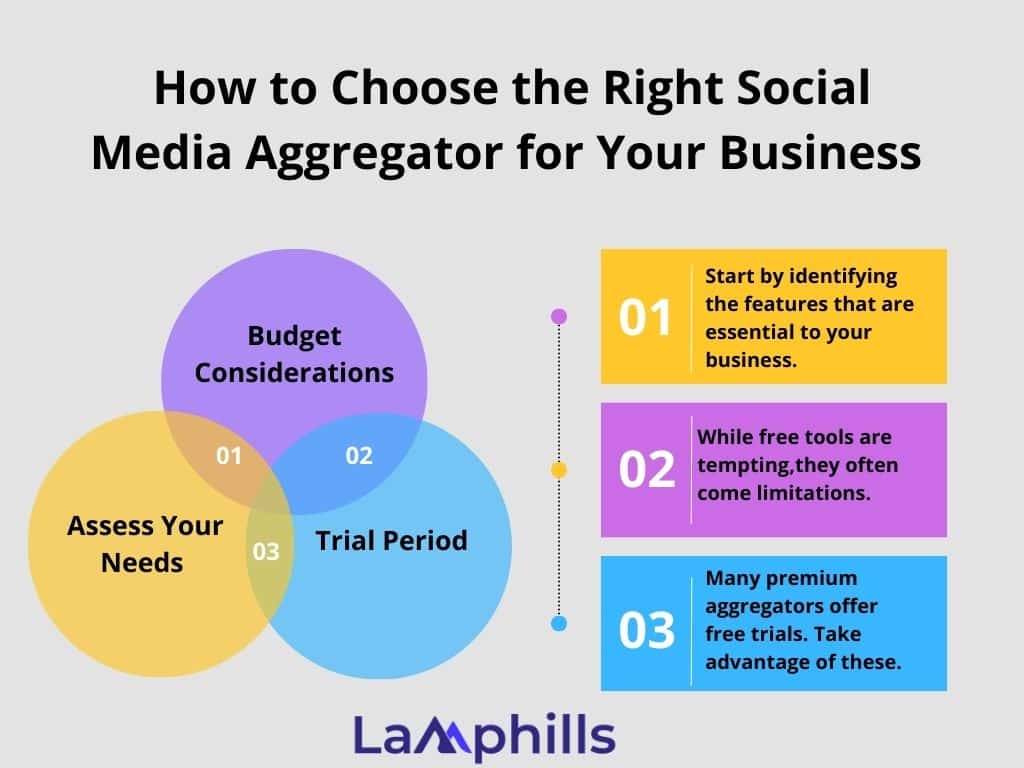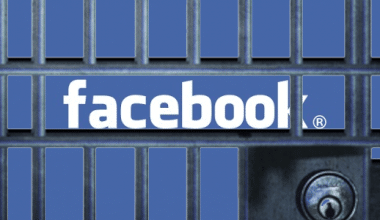I’ve spent years managing multiple social media platforms for clients, from small businesses to consultants. If there’s one thing I’ve learned, it’s that time is a precious commodity. The constant juggling of social media accounts can easily consume your entire day if you’re not careful. That’s where social media aggregators come in—helping you make the most of your time. First, these tools centralize your social media efforts. Secondly, it allows you to manage, monitor, and engage with your audience all in one place. In this guide, I’ll walk you through the best social media aggregators available today, so you can find the perfect fit for your business needs.
Key Points
- A social media aggregator is a sophisticated platform that consolidates content from various social media networks into a single interface.
- These tools centralize your social media efforts. It also allows you to manage, monitor, and engage with your audience all in one place.
- The purpose of a social media aggregator is fundamentally about centralization and efficiency. That is, uniting content and interactions from multiple social media sources into one accessible location.
- User-friendly interface, customization, integration, real-time updates, analytics, and reporting are the primary features to look for when choosing a social media aggregator.
What is a Social Media Aggregator?
A social media aggregator is a sophisticated platform that consolidates content from various social media networks into a single interface. These tools enable a more cohesive strategy for content management and audience engagement. Using these, marketers who need to streamline the monitoring of multiple social media accounts, track engagement, and gather insights across different platforms can be more functional. I define social media aggregators as pivotal tools for managing an organization’s online presence efficiently. It also helps you aggregate posts, comments, and interactions.
What Is the Purpose of an Aggregator?
The purpose of a social media aggregator is fundamentally about centralization and efficiency. From my experience, these tools are designed to unite content and interactions from multiple social media sources into one accessible location. This consolidation helps streamline the management of social media accounts, allowing for more effective tracking of brand mentions, industry trends, and customer feedback. It also facilitates easier content scheduling and improves the ability to respond swiftly to social media activity, thereby enhancing overall engagement and strategic planning.
Top Features to Look for in a Social Media Aggregator
Having tested numerous social media aggregators over the years, I’ve found that the best ones share a few key features that set them apart. The following are some of these features:
#1. User-Friendly Interface
While advanced features are important, a complicated interface can slow you down. A clean, intuitive interface reduces the learning curve, making it easier for you or your team to manage social media without getting overwhelmed.
#2. Customization
Every business is different, and your social media strategy should reflect that. Therefore, look for aggregators that allow you to customize your feeds and dashboards. It enables you to focus on what truly matters to your brand. Secondly, filtering content by hashtags, keywords, or specific platforms is invaluable.
#3. Integration
The ability to seamlessly integrate with all major social media platforms—including Facebook, Twitter, Instagram, LinkedIn, and even niche platforms—is crucial. This ensures that you’re not missing any important content or conversations. So, go for aggregators that allow seamless integration.
#4. Real-Time Updates
Social media moves fast. An aggregator that provides real-time updates allows you to engage with your audience promptly and stay ahead of the curve. In my experience, real-time interaction can significantly boost your engagement rates.
#5. Analytics and Reporting
Data-driven decision-making is key to a successful social media strategy. Look for tools that offer robust analytics and reporting features. These insights will help you understand what’s working and where there’s room for improvement.
Best Social Media Aggregators in 2024
Here’s a deep dive into some of the top social media aggregators that I’ve found particularly effective:
#1. Sprout Social
Pricing: Plans start at $99/month, with a free trial available.
If you’re serious about understanding your social media performance, Sprout Social might be your best bet. The depth of its analytics can help you fine-tune your strategy, leading to better results over time. “Sprout Social’s in-depth analytics give businesses the insights they need to refine their social strategies effectively.” — Forbes, 2024.
Sprout Social stands out for its excellent reporting features. In addition to scheduling and monitoring, it offers advanced social listening capabilities, which can be a game-changer for understanding your audience.
#2. Hootsuite
Pricing: Starts at $19/month, with a 30-day free trial.
“Hootsuite continues to set the standard for social media management, providing businesses with the tools they need to stay ahead in a competitive digital landscape.” — Social Media Today, 2023. Hootsuite is one of the most comprehensive social media management tools. It integrates with over 35 social networks. It also offers advanced scheduling, content curation, and detailed analytics. From my experience, I’ll say that Hootsuite is a powerhouse. It’s perfect for managing multiple accounts across different platforms. The ability to monitor all your social media channels from a single dashboard is a huge time saver. Some of its unique features include extensive integrations, powerful analytics, and an easy-to-use interface. However, it‘s pricey for small businesses with limited budgets.
#3. Buffer
Pricing: Free for up to three social accounts; paid plans start at $6/month.
Buffer is known for its simplicity and ease of use. It offers basic scheduling and analytics, making it a great option for those who don’t need all the bells and whistles. This social media aggregator is ideal if you’re just starting out or managing a few social media accounts. Generally, Buffer is a no-fuss tool that works without overwhelming you with options.
First, it’s affordable, straightforward, and has strong customer support. “Buffer is perfect for small businesses that need an affordable, easy-to-use tool for managing their social media presence.” Entrepreneur, 2024.
Other Includes
- SocialBee
- Feedly
- Agorapulse
- Taggbox
- EmbedSocial
- Curator.io and so on
Best Free Social Media Aggregators
If you’re working with a tight budget, you can maximize free social media aggregators at no cost. The following are some of the best free social media aggregators:
#1. Juicer
Juicer aggregates content from multiple social media platforms into a single feed that you can embed on your website. It’s perfect for businesses wanting to showcase social proof and user-generated content. However, it has limited customization options and no advanced analytics.
#2. Tagembed
Tagembed is a fantastic option if you want to keep your website lively with up-to-date social media content. However, if you’re looking for more advanced features, you might want to explore their paid plans. It offers real-time social media feeds, which can be easily embedded into your website. It’s also a great way to create interactive and dynamic content. Tagembed is ideal for businesses looking to keep their website fresh with real-time social media content.
Unfortunately, the free plan has limited features and includes branding, which might not be ideal for everyone.
How to Choose the Right Social Media Aggregator for Your Business

Selecting the right social media aggregator isn’t just about picking the most popular tool—it’s about finding the one that best meets your needs. Use the following guide to choose the right aggregator for your business:
#1. Assess Your Needs
Start by identifying the features that are essential for your business. If you manage multiple social media accounts, prioritize aggregators that offer comprehensive scheduling and monitoring. If analytics are your focus, choose a tool with robust reporting capabilities.
#2. Budget Considerations
While free tools are tempting, they have limitations that could hinder your social media efforts. Therefore, consider a premium tool if you require more advanced features.
#3. Trial Periods
Many premium aggregators offer free trials. Take advantage of these to test out the tool’s functionality and see how well it integrates with your workflow.
Tips for Maximizing the Use of Social Media Aggregators
Using a social media aggregator can significantly enhance your social media management, but to truly harness its potential, there are practices to implement and align with your overall strategy. Based on my experience managing multiple social media accounts, the following are some expert tips to help you get the most out of your social media aggregator:
#1. Stay Organized with Custom Feeds
One of the greatest advantages of social media aggregators is the ability to customize feeds to suit your specific needs. You can organize your feeds by content type, platform, or campaign. Organization is key to effective social media management. A well-structured feed allows you to focus on what matters most and ensures important things don’t slip through the cracks. For example, create separate feeds for user-generated content, brand mentions, industry news, and competitor activity. This way, you can quickly access the information without getting overwhelmed.
#2. Regularly Update Your Content Feeds
According to a 2023 report by Hootsuite, 78% of social media managers who frequently update their content feeds see a 30% increase in audience engagement over six months. Social media is constantly evolving, and so should your content. Regularly updating your aggregator to include new content ensures that your audience sees fresh, relevant material. This keeps your social media presence dynamic and helps you stay ahead of industry trends.
#3. Leverage Analytics for Continuous Improvement
Analytics are the backbone of successful social media strategies. You can significantly enhance your content’s effectiveness by monitoring and leveraging analytics. Most social media aggregators come with built-in analytics tools that provide valuable insights into your content’s performance. Don’t just glance at these reports—dig deep to understand what’s working and what isn’t. Also, pay attention to metrics like engagement rates, click-through rates, and conversion rates. Use these insights to tweak your strategy, optimize your content, and improve your overall social media ROI.
#4. Engage Actively with Your Audience
Social media is a two-way street. Active engagement through your aggregator can turn followers into brand advocates and customers into repeat buyers. A social media aggregator isn’t just about content curation; it’s also a powerful tool for engagement. Use your aggregator to monitor mentions, comments, and direct messages across all platforms in real time. Respond promptly to interactions to build stronger relationships with your audience. Engagement drives loyalty, and loyalty drives conversions.
#5. Automate with Caution
A study by Sprout Social found that 43% of consumers find brand interactions more authentic when a mix of automation and real-time engagement is used. Many social media aggregators offer automation features like scheduled posts and automated responses. While these tools can save time, use them judiciously. Over-automation can make your social media presence feel impersonal. Balance automation with genuine, real-time interactions to maintain authenticity.
#6. Integrate with Other Tools for Maximum Efficiency
Integration is key to a seamless digital strategy. The more your tools work together, the more cohesive and effective your marketing efforts will be. To truly maximize your social media aggregator, integrate it with other tools in your digital marketing stack. For example, connect it with your CRM system to track how social media interactions lead to sales or use it alongside email marketing software to synchronize campaigns. This holistic approach ensures that your social media efforts are aligned with your broader marketing goals.
#7. Monitor Competitors and Industry Trends
Your social media aggregator can be a powerful tool for competitive analysis. So, set up feeds to monitor your competitors’ social media activities, industry hashtags, and trending topics. This will give you insights into what’s working in your industry and help you stay ahead of the curve.
Lamphills Social Media Aggregator Evaluation Checklist
This Lamphills social media aggregator evaluation checklist will help you choose the one that best suits your needs when researching or trialing different social media aggregators. Use this to assess and compare social media aggregators based on your needs.
Download Lamphill Social Media Aggregator Evaluation Checklist
What Is an Example of an Aggregator?
One notable example of a social media aggregator is Hootsuite. With firsthand experience using Hootsuite, I can attest to its effectiveness in managing diverse social media channels from a unified dashboard. Hootsuite allows users to schedule posts, monitor brand mentions, and analyze performance metrics across platforms like Twitter, Facebook, and Instagram. This aggregation capability is invaluable for efficiently managing social media campaigns and gaining comprehensive insights into audience interactions.
What Are the Benefits of an Account Aggregator?
Account aggregators offer several distinct benefits, such as streamlined management, enhanced efficiency, comprehensive insight, improved engagement, and effective content curation.
Conclusion
Social media aggregators are indispensable tools in this present time. You’re set up for success once you find a solution that aligns with your business goals. Whether a small business or a consultant, these tools can help you streamline your social media management, save time, and ultimately drive better results. It also enables you to manage your online presence effectively. Which of these tools are you conversant with? Let me know in the comment section.
Related Articles
- Effective Tips for Successful Webinar Marketing: Best Strategies for 2024
- Understanding UTM in Digital Marketing: A Comprehensive Guide
- 10 Social Media Analytics to Track on Your Social Media Dashboard
- Understanding Instagram Subscriptions: Benefits and How to Get Started






